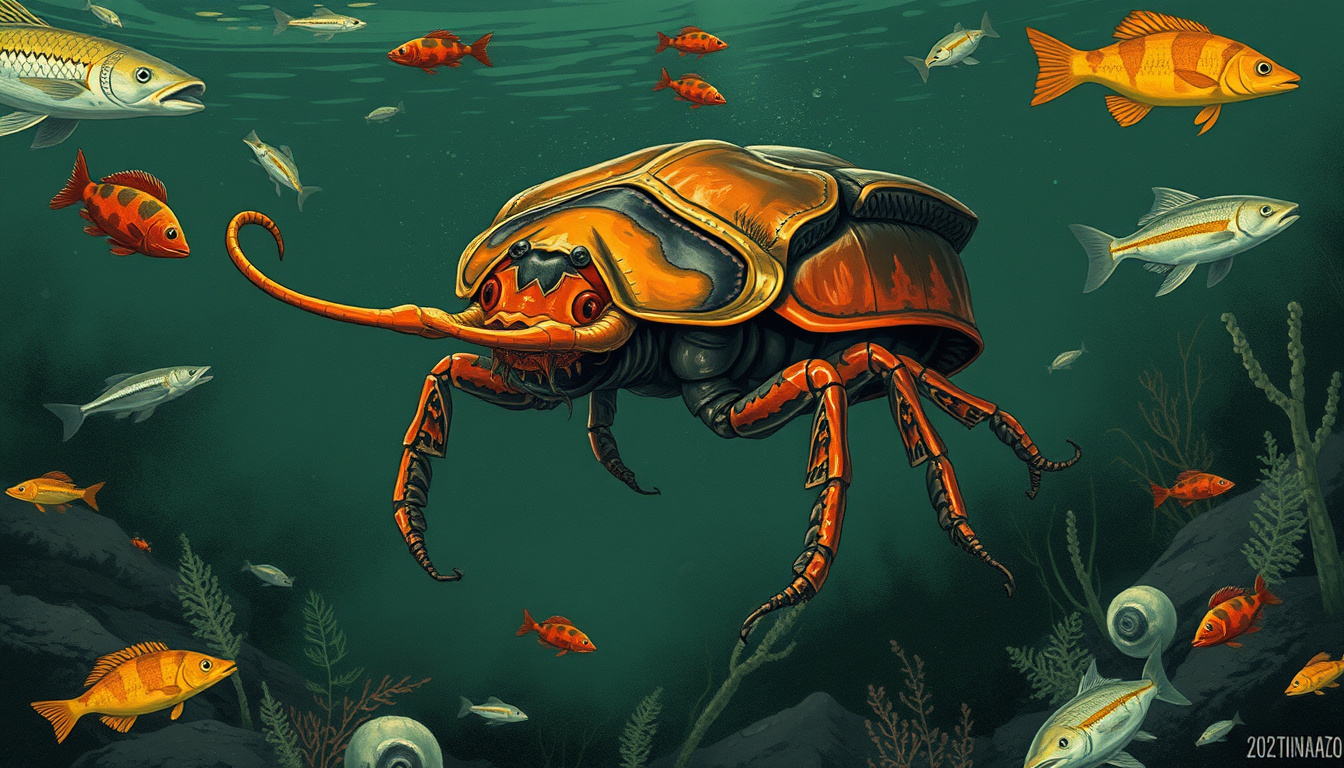The giant water bug, scientifically known as Lethocerus americanus, is the largest insect species found in Canada and holds a prominent position in the freshwater ecosystems across Ontario. This intriguing insect, often referred to as the ‘toe biter’ due to its excruciating bite, has captivated the attention of nature enthusiasts and researchers alike. With its distinctive hunting technique, remarkable adaptations, and significant ecological role, understanding the giant water bug not only sheds light on its biology and behavior but also emphasizes the importance of this species in maintaining the health of aquatic environments. In this article, we will explore the fascinating characteristics of the giant water bug, its impact on local ecosystems, and the implications of its increasing presence in Ontario.
As we delve deeper into its world, we will look at why this insect, despite its daunting reputation, is a crucial component of its habitat and how it should be viewed within the context of biodiversity conservation.

Key Takeaways
- The giant water bug is the largest insect in Canada and can deliver a painful bite known as the ‘toe biter’.
- Despite their intimidating nature, giant water bugs play a crucial ecological role in local aquatic ecosystems.
- This insect has become a known delicacy in various cultures, showcasing its diverse significance beyond its harmful bite.
Understanding the Giant Water Bug: Biology and Behavior
The giant water bug (Lethocerus americanus) is an intriguing insect that commands attention not only for its impressive size—being the largest insect in Canada—but also for its fascinating biology and behavior. Found throughout various water bodies in Ontario, this formidable species is notorious for its painful bite, often earning it the moniker ‘toe biter.’ With a unique hunting technique, the giant water bug employs a retractable proboscis to deliver a toxic venom, which serves to paralyze and digest its prey, typically small fish and amphibians. Beyond its notorious feeding habits, this insect is also capable of flight, often seen bumping against artificial lights during the evening hours, which can cause quite a stir among unsuspecting onlookers. Interestingly, while many may view the giant water bug with apprehension, it holds culinary value in several cultures, where it is prepared as a delicacy and enjoyed as street food. As recent sightings in Ontario indicate the seasonal emergence of these intriguing creatures, it’s essential to approach them with caution. While wading in waters that these bugs inhabit can lead to painful bites, recognizing their role as vital components of local ecosystems highlights the importance of coexisting peacefully with these fascinating insects.
The Ecological Role of the Giant Water Bug in Ontario
Giant water bugs are not only formidable hunters but also play a crucial role in maintaining the health of aquatic ecosystems in Ontario. As predators, they help control the populations of smaller fish and amphibians, preventing overpopulation that could disrupt the balance of their habitats. Their presence in lakes, rivers, and ponds indicates a certain level of biodiversity and water quality, as these insects thrive in environments rich in organic matter. Moreover, giant water bugs themselves serve as a food source for various species, including birds and larger fish, thereby forming an integral part of the food web. Understanding their ecological significance encourages a greater appreciation for their role within the ecosystem, shifting the perspective from fear-based reactions to a more informed and respectful coexistence.





